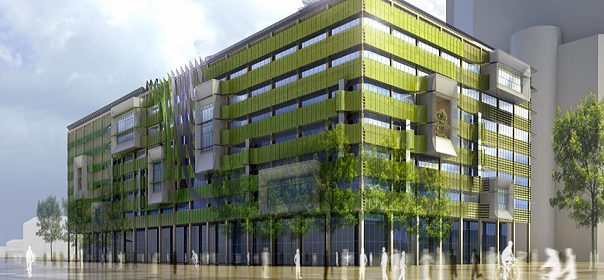Buildings have extensive direct and indirect impacts on the environment. During their buildings use energy, water, and raw materials, generate waste, and emit potentially harmful atmospheric emissions. Make smarter decision by opting for a sustainable green building which do not only helps cut down on emissions released into the ozone, but also helps significantly reduce energy, water and HVAC costs. The green movement is here to stay and as time progresses the benefits of sustainable building will continue to grow.
About Green Building
Green Buildings design and systems are static though operations and building use need dynamic response to occupant needs, operating policies, change in use of space, etc. Historically, Green Building face challenge due to limited opportunities for integrating different building equipment and systems to get a holistic view of energy and other green factors in order to
- Be able to operate building for optimum energy or comfort
- Identify failure or degradation signs of equipment
- Correlate deviation to change of operations or need
- Effective measurement and verification process and tools for energy use, operation and efficiency
The benefits of sustainable building:
While it may cost you a bit more to get started when you are going green, because green materials and products can be more costly, you really have to consider the type of savings that you will be able to reap. You will be able to save on energy costs, because going green also means conserving energy. You should really look at the green building as more of an investment than anything else. An investment that will be able to save you money, as well as an investment that will be able to help the environment! It is a win-win situation for everyone!
Economic Benefits
Not only does sustainable building improve the quality of our environment but it also has many economic benefits as well. By using sustainable materials, reducing energy consumption, and improving water efficiency it will enable you to:
- Decreased Infrastructure Strain.Efficient buildings exert less demand on the local power grid and water supply, stretching the capacity of local infrastructure
- Energy and Water Savings. The resource efficiency provided by green design and technology leads to drastic reductions in operation costs that quickly recoup any additional project costs 5and continue to offer dramatic long-term savings (see statistics). Money previously directed toward utility costs may be used for other purposes.
- Increased Property Values. With energy costs on the rise, the low operating costs and easy maintenance of green buildings make for lower vacancy rates and higher property values.
- Decreased Infrastructure Strain.Efficient buildings exert less demand on the local power grid and water supply, stretching the capacity of local infrastructure.
- Improved Employee Attendance. Green design emphasizes increased natural lighting and control of ventilation and temperature-attributes that improve employee health and prevent absences. The U.S. Environmental Protection Agency reports major reductions in health care costs and work losses resulting from commonly recommended improvements to indoor environments.
- Increased Employee Productivity.Employee productivity has been positively correlated to indoor environmental conditions, and shows improvements where green principles have been applied.
- Sales Improvements.Studies show better sales in stores that utilize natural light. Retailers are increasingly using daylighting in an effort to harvest the associated sales benefits.
Internet of Things (IoT): the generalization in instrumenting buildings with sensors, actuators, micro-chips, micro- and nano-embedded systems and advancements in IT technology and data convergence have found increased relevance in the way Green Buildings are operated transforming them to “Connected Building”.
“Connected Buildings” generate huge data from multiple systems such as energy, IT, Access, Security, operations, etc. Due to variety, velocity, volume of data conventional methods of manual analysis doesn’t produce desired results, therefore industry categories this as Big Data problem.
IoT combined with ubiquitous computing provided enormous data and information about building. These relationship enable Green building to forecast, predict, and optimize its operations and needs. This ability of Green Building to be self-aware, self-regulated and optimized transforms it into “Sustainable Green Building” also some time termed as “Living Building”.

